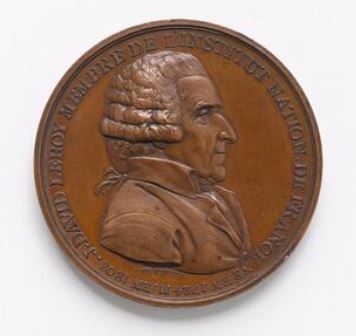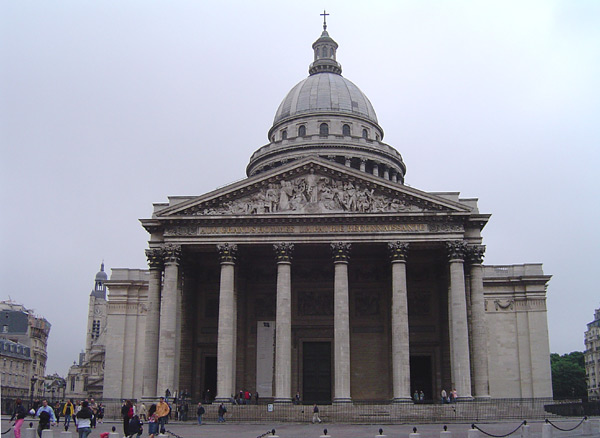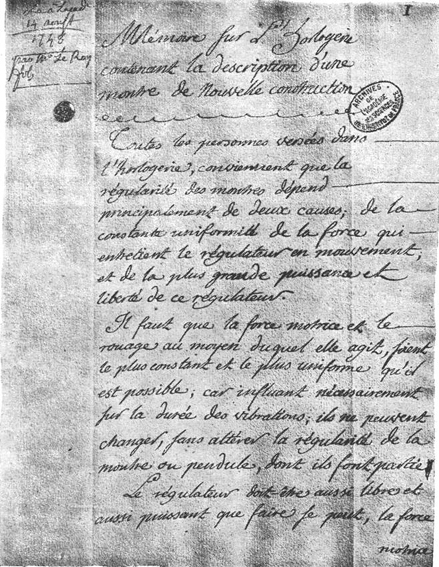|
Julien-David Le Roy
French engraver Julien-David Le Roy or Leroy (; 6 May 1724 in Paris – 28 January 1803 in Paris) was an 18th-century French architect and archaeologist, who engaged in a rivalry with Britons James Stuart and Nicholas Revett over who would publish the first professional description of the Acropolis of Athens since an early 1682 work by Antoine Desgodetz. Le Roy succeeded in printing his '' Ruins of the Most Beautiful Monuments of Greece'' four years ahead of Stuart and Revett. Athens study Stuart and Revett were researching Athens since 1748Bergdoll, p. 16 but Le Roy had an advantage in accessing the ruins due to good relations between France and the Ottoman Empire.Lefaivre, Tzonis p. 358 Le Roy's studies, supported by Comte de Caylus and his art circle, recruited the finest engravers and architects to produce illustrations, and became sort of a national project for the pre-revolutionary France.Bergdoll, p. 18 Le Roy spent only three months in Athens (compared to three ... [...More Info...] [...Related Items...] OR: [Wikipedia] [Google] [Baidu] |
Giovanni Battista Piranesi
Giovanni Battista (or Giambattista) Piranesi (; also known as simply Piranesi; 4 October 1720 – 9 November 1778) was an Italian Classical archaeologist, architect, and artist, famous for his etchings of Rome and of fictitious and atmospheric "prisons" (''Carceri d'invenzione''). He was the father of Francesco Piranesi, Laura Piranesi and . Biography Piranesi was born in Venice, in the parish of S. Moisè where he was baptised. His father was a stonemason. His brother Andrea introduced him to Latin literature and ancient Greco-Roman civilization, and later he was apprenticed under his uncle, Matteo Lucchesi, who was a leading architect in ''Magistrato delle Acque'', the state organization responsible for engineering and restoring historical buildings. From 1740, he had an opportunity to work in Rome as a draughtsman for Marco Foscarini, the Venetian ambassador of the new Pope Benedict XIV. He resided in the Palazzo Venezia and studied under Giuseppe Vasi, who introduced hi ... [...More Info...] [...Related Items...] OR: [Wikipedia] [Google] [Baidu] |
Dome
A dome () is an architectural element similar to the hollow upper half of a sphere. There is significant overlap with the term cupola, which may also refer to a dome or a structure on top of a dome. The precise definition of a dome has been a matter of controversy and there are a wide variety of forms and specialized terms to describe them. A dome can rest directly upon a Rotunda (architecture), rotunda wall, a Tholobate, drum, or a system of squinches or pendentives used to accommodate the transition in shape from a rectangular or square space to the round or polygonal base of the dome. The dome's apex may be closed or may be open in the form of an Oculus (architecture), oculus, which may itself be covered with a roof lantern and cupola. Domes have a long architectural lineage that extends back into prehistory. Domes were built in ancient Mesopotamia, and they have been found in Persian architecture, Persian, Ancient Greek architecture, Hellenistic, Ancient Roman architecture, ... [...More Info...] [...Related Items...] OR: [Wikipedia] [Google] [Baidu] |
Jacques-Germain Soufflot
Jacques-Germain Soufflot (, 22 July 1713 – 29 August 1780) was a French architect in the international circle that introduced neoclassicism. His most famous work is the Panthéon in Paris, built from 1755 onwards, originally as a church dedicated to Saint Genevieve. Biography Soufflot was born in Irancy, near Auxerre. In the 1730s he attended the French Academy in Rome, where young French students in the 1750s would later produce the first full-blown generation of Neoclassical designers. Soufflot's models were less the picturesque Baroque being built in modern Rome, as much as the picturesque aspects of monuments of antiquity. After returning to France, Soufflot practiced in Lyon, where he built the ''Hôtel-Dieu'', like a chaste riverside street facade, interrupted by the central former chapel, its squared dome with illusionistic diminishing coffers on the interior. With the Temple du Change, he was entrusted with completely recasting a 16th-century market exchange b ... [...More Info...] [...Related Items...] OR: [Wikipedia] [Google] [Baidu] |
Charles Le Roy (physician)
Charles Le Roy (12 February 1726 – 12 December 1779) was an 18th-century French physician and Encyclopédiste. An advisor to the king, he was professor of medicine at the University of Montpellier, a member of the French Academy of Sciences, the Royal Society, the ''Société royale de médecine'' and the Academies of Montpellier, Nîmes and Toulouse. Life Charles Le Roy was the youngest of the four sons of French watchmaker Julien Le Roy (1686–1759). He had three brothers, the watchmaker Pierre Le Roy (1717–1785), the physicist Jean-Baptiste Le Roy and the architect Julien-David Le Roy (1724–1803). His paternal uncle Pierre Le Roy (1687-1762) was also a watchmaker. His father gave him an excellent education. Because he was weak and vulnerable, the young Le Roy was sent to the Mediterranean city of Montpellier where he began to study medicine, which he continued in Italy. From there he went to Paris. But soon he was forced for health reasons, to settle again in Montpelli ... [...More Info...] [...Related Items...] OR: [Wikipedia] [Google] [Baidu] |
Encyclopédistes
The Encyclopédistes () (also known in British English as Encyclopaedists, or in U.S. English as Encyclopedists) were members of the , a French writers' society, who contributed to the development of the ''Encyclopédie'' from June 1751 to December 1765 under the editors Denis Diderot and Jean le Rond d'Alembert. History The composition of the 17 volumes of text and 11 volumes of plates of the ''Encyclopédie'' was the work of over 150 authors belonging, in large part, to the intellectual group known as the philosophes. They promoted the advancement of science and secular thought and supported tolerance, rationality, and open-mindedness of the Enlightenment. More than a hundred encyclopédistes have been identified. They were not a unified group, neither in ideology nor social class.Frank A. Kafker, ''The Encyclopedists as a Group: A Collective Biography of the Authors of the Encyclopédie'' (Oxford: Voltaire Foundation, 1996). Below some of the contributors are listed in alpha ... [...More Info...] [...Related Items...] OR: [Wikipedia] [Google] [Baidu] |
Jean-Baptiste Le Roy
Jean-Baptiste Le Roy (15 August 1720, Paris – 20 January 1800, Paris) was an 18th-century French physicist and one of the major contributors to the ''Encyclopédie'' by Diderot and d’Alembert for technology. The son of 18th-century Parisian clockmaker and watchmaker Julien Le Roy, he had three brothers: Pierre (1717–1785), a brilliant clock-maker in his own right, Julien-David (1724–1803), a neo-classical architect and archaeologist, and Charles a physician and Encyclopédiste. In the field of science, Jean-Baptiste Le Roy worked on a variety of topics; of particular importance were his research on electricity. Together with Patrick d'Arcy, he constructed in 1749 the first electrometer, a device for detection of electrical charges and voltages. He also experimented with lightning conductors and with the use of electricity in the treatment of diseases. As contributor to the ''Encyclopédie'', he wrote more than 130 articles under the author abbreviation "T", including t ... [...More Info...] [...Related Items...] OR: [Wikipedia] [Google] [Baidu] |
Pierre Le Roy
Pierre Le Roy (1717–1785) was a French clockmaker. He was the inventor of the detent escapement, the temperature-compensated balance and the isochronous balance spring. His developments are considered as the foundation of the modern precision clock. Le Roy was born in Paris, eldest son of Julien Le Roy, a clockmaker to Louis XV who had worked with Henry Sully, in which place Pierre Le Roy succeeded his father. He had three brothers: Jean-Baptiste Le Roy (1720-1800), a physicist; Julien-David Le Roy (1724–1803), an architect; and Charles Le Roy (1726–1779), a physician and encyclopédiste. Invention of the detent escapement In 1748, he invented a pivoted detent type of escapement,''Britten's Watch & Clock Makers' Handbook Dictionary & Guide Fifteenth Edition'' p.12/ref> or detached escapement, which makes him the inventor of the Escapement#Detent escapement, detent escapement: "The invention of the detached escapement belongs to P. Le Roy". This should not be conf ... [...More Info...] [...Related Items...] OR: [Wikipedia] [Google] [Baidu] |
Rome
, established_title = Founded , established_date = 753 BC , founder = King Romulus (legendary) , image_map = Map of comune of Rome (metropolitan city of Capital Rome, region Lazio, Italy).svg , map_caption = The territory of the ''comune'' (''Roma Capitale'', in red) inside the Metropolitan City of Rome (''Città Metropolitana di Roma'', in yellow). The white spot in the centre is Vatican City. , pushpin_map = Italy#Europe , pushpin_map_caption = Location within Italy##Location within Europe , pushpin_relief = yes , coordinates = , coor_pinpoint = , subdivision_type = Country , subdivision_name = Italy , subdivision_type2 = Region , subdivision_name2 = Lazio , subdivision_type3 = Metropolitan city , subdivision_name3 = Rome Capital , government_footnotes= , government_type = Strong Mayor–Council , leader_title2 = Legislature , leader_name2 = Capitoline Assemb ... [...More Info...] [...Related Items...] OR: [Wikipedia] [Google] [Baidu] |
Jacques-François Blondel
Jacques-François Blondel (8 January 1705 – 9 January 1774) was an 18th-century French architect and teacher. After running his own highly successful school of architecture for many years, he was appointed Professor of Architecture at the Académie Royale d'Architecture in 1762, and his ''Cours d'architecture'' ("Course of Architecture", 1771–1777) largely superseded a similarly titled book published in 1675 by his famous namesake, François Blondel, who had occupied the same post in the late 17th century. Career Born in Rouen, he initially trained under his uncle Jean-François Blondel (1683–1756), architect of Rouen. Jacques-François was in Paris by 1726 and continued his studies with Gilles-Marie Oppenord, from whom he acquired a knowledge of rococo. He also worked with Jean Mariette, contributing to the latter's ''L'Architecture françoise'' (1727, 1738), as a writer and as an architectural engraver. Blondel developed into a conservative and thorough architect, whos ... [...More Info...] [...Related Items...] OR: [Wikipedia] [Google] [Baidu] |
Julien Le Roy
Julien Le Roy (1686-1759) was a major 18th-century Parisian clockmaker and watchmaker. He was born in Tours in 1686, the scion of four previous generations of clockmakers. By the age of 13, had already made his first clock. In 1699, he moved to Paris for further training. He became ''maître horloger'' in 1713 and later ''juré'' of his guild. Further appointments followed, including the Directorship of the ''Société des Arts'', but the pinnacle of his achievement was being appointed clockmaker (''Horloger Ordinaire du Roi'') to King Louis XV in 1739. He carried on his business from premises in the Rue du Harlay until his death in 1759. His son Pierre Le Roy (1717–1785), a brilliant clock-maker in his own right, carried on the business until the early 1780s. Another son, Julien-David Le Roy (1724–1803), was a neo-classical architect and archaeologist, author of the ''Ruins of the Most Beautiful Monuments of Greece''. His third son, Charles was a physician and Encyclopéd ... [...More Info...] [...Related Items...] OR: [Wikipedia] [Google] [Baidu] |






.jpg)